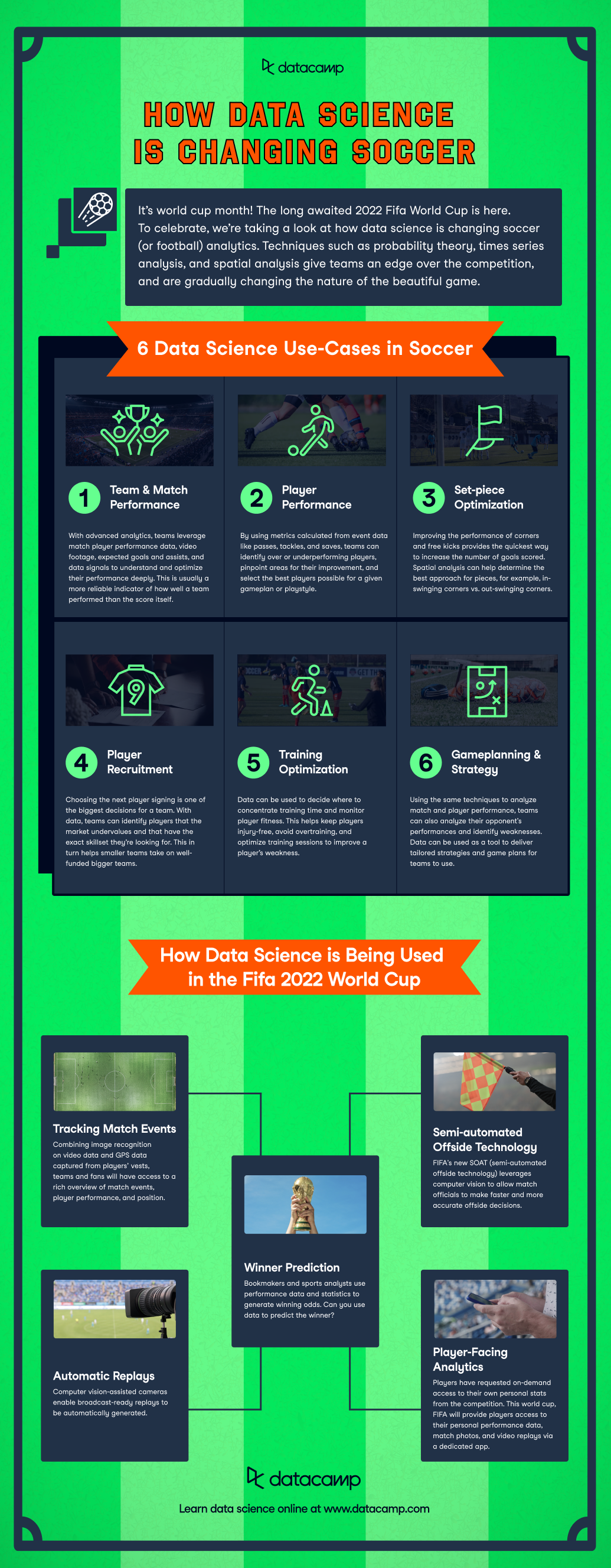How Data Science is Changing Soccer
With the Fifa 2022 World Cup upon us, learn about the most widely used data science use-cases in soccer.
Nov 2022 · 3 min read
RelatedSee MoreSee More
blog
Predicting FIFA World Cup Qatar 2022 Winners
Learn to use Elo ratings to quantify national soccer team performance, and see how the model can be used to predict the winner of FIFA World Cup Qatar 2022.
Arne Warnke
7 min
blog
Sports Analytics: How I Predicted the EURO 2024 Final
This article explores the application of sports analytics and machine learning to predict EURO 2024 match outcomes, delving into the challenges and methodologies.
Tom Farnschläder
17 min
podcast
Data Science in Finance
The financial world has been irrecoverably changed by the advent of data science. Find out how.
Hugo Bowne-Anderson
59 min
podcast
Data Science & AI in the Gaming Industry
Marie and Adel discuss how data science can be used in gaming and the unique challenges data teams face.
Adel Nehme
38 min
code-along
Exploring World Cup Data in Python
Learn to use a combination of SQL & Python to import, process, and analyze data
Filip Schouwenaars
code-along
Exploring World Cup Data in Power BI
We'll use custom visualizations for data analysis and DAX for data manipulation
Jess Ahmet
